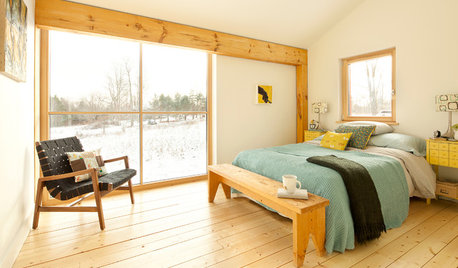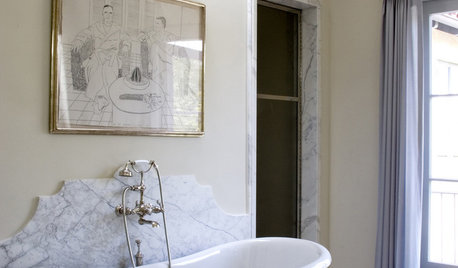Still looking for better staking of tomatoes
organic_mamag
14 years ago
Related Stories

LIFEEasy Green: Modern Homesteaders Stake a Claim
With more options for raising chickens, growing edibles and keeping bees than ever, suburban and city folk are rediscovering a lost art
Full Story
EDIBLE GARDENSSummer Crops: How to Grow Tomatoes
Plant tomato seedlings in spring for one of the best tastes of summer, fresh from your backyard
Full Story
LIFEKitchen Traditions: Tomato Season Meets a Family Legacy
Somewhere a Sicilian great-great-grandmother is smiling at a bowl of American-made sauce
Full Story
HOUSEKEEPINGTackle Big Messes Better With a Sparkling-Clean Dishwasher
You might think it’s self-cleaning, but your dishwasher needs regular upkeep to keep it working hard for you
Full Story
MORE ROOMSCould Your Living Room Be Better Without a Sofa?
12 ways to turn couch space into seating that's much more inviting
Full Story
GREAT HOME PROJECTSNew Hardware Gives Doors a Turn for the Better
New project for a new year: Get a handle on how to find the knobs, levers or pulls that will make your doors memorable
Full Story
LIFE10 Feel-Better Things to Do on a Sick Day at Home
Nourish, pamper and heal yourself when a cold keeps you housebound, with these restorative ideas
Full Story
ARCHITECTURELook Beyond the House to Find a Home
See how clever homeowners have put down stakes in a lighthouse, train depot, church, bourbon distillery, barn and missile silo
Full Story
WINTER GARDENING6 Reasons I’m Not Looking Forward to Spring
Not kicking up your heels anticipating rushes of spring color and garden catalogs? You’re not alone
Full Story
MATERIALS10 Modern Marble Looks
Marble has broken free of the standard kitchen countertop slab and is showing up on bathtub backsplashes, modern dining tables and more
Full StoryMore Discussions







pyrrho
digdirt2
Related Professionals
Finneytown Landscape Architects & Landscape Designers · Bristol Landscape Contractors · Fishers Landscape Contractors · Louisville Landscape Contractors · Ramsey Landscape Contractors · Waltham Landscape Contractors · Shafter Landscape Contractors · DeKalb General Contractors · Highland City General Contractors · Perrysburg General Contractors · Woodland General Contractors · Alvin Decks, Patios & Outdoor Enclosures · Larkspur Decks, Patios & Outdoor Enclosures · Parker Decks, Patios & Outdoor Enclosures · St John's Kirk Decks, Patios & Outdoor Enclosuresflorida_country_boy
cleo88
mtbigfigh
sautesmom Sacramento
vegnewsday
ufseeds
cleo88
mulio
mtbigfigh
seeker11
noinwi
greenhummer
larryw
thepodpiper
star_stuff
spiced_ham
majac777
jrslick (North Central Kansas, Zone 5B)
sandy0225
winnetka75
tomatowizard
phytomaniac
pastor_steve
mauirose
digdirt2
sweetwm007
alamo5000
sweetwm007
wwiivet
trh701
myfamilysfarm
tn_veggie_gardner
zeuspaul
tndandelion
cyrus_gardner
alamo5000
californian
alamo5000
organicdan
junktruck
fvcosta_verizon_net